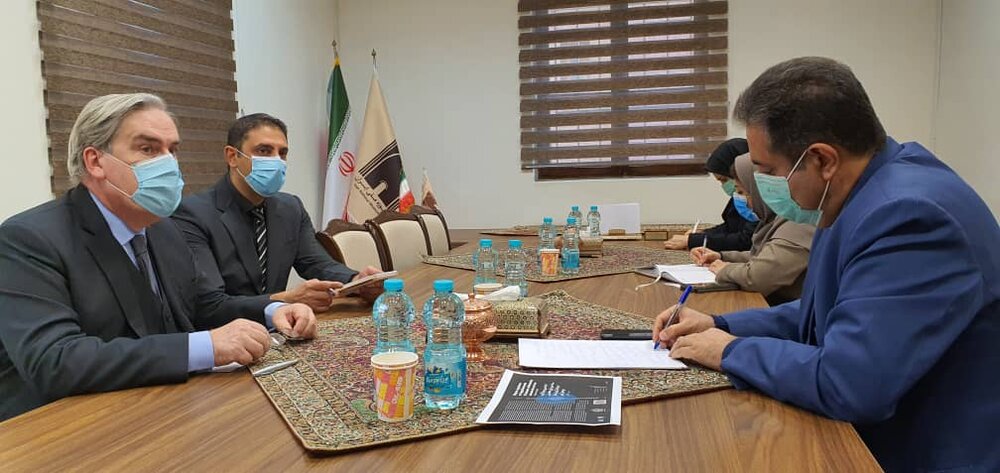Iran, France preparing to expand museum cooperation

TEHRAN – Iran and France are preparing to widen museum cooperation in various areas including joint online exhibits.
Ways to develop cooperation was discussed on Tuesday in a Tehran meeting attended by French ambassador to Iran Philippe Thiébaud, Myriam Pavageau, the cultural attaché of the embassy, National Museum of Iran Director Jebrael Nokandeh, and his deputy for cultural affairs, Fereidoun Biglari, a museum official told the Tehran Times on Wednesday.
The officials also exchanged views on holding a joint virtual exhibition by the National Museum of Iran and the Louvre.
Thiébaud pointed out the negative impact of the coronavirus pandemic on the activities of museums and said that holding virtual exhibitions is one of the available solutions to solve this problem.
He also noted the importance of publications and expressed satisfaction that the French embassy, in cooperation with the Iran National Museum, has published several books on Iranian cultural heritage in recent years.
He also referred to the scientific services of the late Michele Casanova, a French archaeologist in Iran, who recently died of coronavirus disease. Thiébaud described her as “an archaeologist who loved Iranian culture”.
The envoy also mentioned his visit to the Iran National Museum exhibition in Alicante, Spain, which he considered to be a very successful exhibition.
Nokandeh also welcomed the ambassador's proposal, noting the close relationship between the Louvre museum and the National Museum of Iran in recent years, and joint research projects and successful exhibitions. Holding a virtual exhibition could be another part of the potential of the two museums in cultural collaborations.
He also expressed hope that the two museums, in cooperation with the French embassy, would be able to translate the Louvre brochure into Persian so that Iranian visitors could receive the necessary information in Persian while visiting the Louvre. In the end, Nokandeh expressed the hope that these joint museum activities will be a step towards recognizing the two nations and bring the two rich cultures closer.
Pavageau pointed to the capabilities of social media in introducing the cultural and historical objects and monuments of the two countries and said that during the past year and the limitations of the Coronavirus pandemic, these social media have played an important role in communication and education.
Biglari, the cultural deputy of the museum, noted the collaborations of the National Museum of Iran and French universities and institutes, which have yielded interesting results in the field of paleoanthropology, zooarchaeology, and paleoenvironment.
At the end of the meeting, the ambassador presented several new publications published with the support of the cultural section of the embassy to the National Museum of Iran. One of these publications is the brochure of the French residence in Tehran, which was recently published by the French embassy and introduces this Qajar mansion designed by the French architect Andre de Balloy.
He stressed that the possibility of a virtual visit to the mansion is provided on the website of the French embassy. Welcoming the event, Nokandeh expressed hope that other embassies located in similar old monuments would be able to introduce the buildings in this way.
The officials also agreed to unveil one of the recent joint publications and also to pursue a joint virtual exhibition.
In 2018, Louvre lent art to Tehran for an 'unprecedented' show, which was held at the National Museum of Iran. The show was the first large-scale exhibition by a major Western museum in the country, putting on show some 50 works including 2,400-year-old Egyptian sphinx, a bust of Roman emperor Marcus Aurelius and drawings by Rembrandt and Delacroix and other artefacts linked to Greek, Egyptian and Mesopotamian culture, as well as objects from ancient Iran.
In parallel with the Tehran exhibition, the Louvre-Lens presented a vast collection of objects handcrafted by Qajar-era (1785-1925) talented Iranian court from March to July of the same year.
AFM/

Leave a Comment